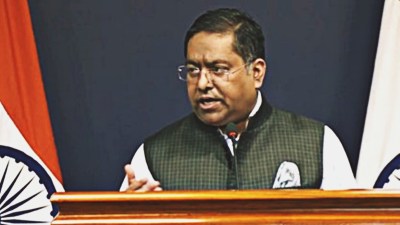A 36-year-old homemaker had brain stroke while making breakfast: How quick rehab got her back on her feet in 8 weeks
Young stroke survivors can return to active professional and personal lives within 3 to 6 months. Just follow rehab protocol. A world brain health day special
 Traditionally considered a condition affecting older adults, brain strokes are increasingly being reported among individuals under the age of 45. (Source: Freepik)
Traditionally considered a condition affecting older adults, brain strokes are increasingly being reported among individuals under the age of 45. (Source: Freepik)Mrs X, a 36-year-old homemaker, started her day as usual, preparing breakfast for her family. At around 10 am, she suddenly experienced numbness in her face, along with weakness in her right arm and leg and an inability to speak. Though she could understand spoken language and communicate through gestures, she was unable to utter a single word.
Fortunately, she was brought to the hospital within two hours of symptom onset. She was administered an intravenous thrombolytic or a blood clot-busting drug, resulting in moderate recovery of her speech. Physiotherapy for limb weakness and speech therapy began immediately and continued at home for the next six weeks. Within six to eight weeks, she experienced a near-complete recovery, with only mild residual difficulty. Notably, Mrs X had been on oral contraceptive pills for the preceding three months — an often overlooked risk factor.
Why are younger people at risk of stroke?
Traditionally considered a condition affecting older adults, brain strokes are increasingly being reported among individuals under the age of 45. A stroke occurs when the blood supply to a part of the brain is interrupted or when a blood vessel ruptures, leading to the death of brain cells. Contributing factors such as high stress, poor lifestyle choices and underlying health conditions have made younger adults more vulnerable.
The triggers are usually uncontrolled hypertension (high blood pressure), diabetes, smoking and alcohol abuse, high cholesterol levels, sedentary lifestyle, use of oral contraceptive pills, undiagnosed cardiac conditions, chronic stress and sleep deprivation, drug abuse and thrombotic disorders affecting blood clotting.
But quick rehabilitation can get you back on your feet
Rehabilitation starts once the patient is medically stable. For young stroke survivors, the focus extends beyond survival to full functional recovery and reintegration into daily life, including work, social engagement, and physical activity.
Immediate rehabilitation begins at hospital itself
We advise physiotherapy to maintain mobility and prevent stiffness. Speech therapy begins almost immediately to address difficulties in communication or swallowing. Occupational therapy helps the survivor relearn everyday skills such as dressing, eating, and grooming.
For the first four weeks, the emphasis is on regaining balance, coordination and mobility. The patient needs emotional support and counselling to address feelings of fear, frustration and depression. Between the fourth and 12th weeks, depending on stroke severity, patients may continue therapy at home or in a rehab facility. Repetitive, goal-oriented exercises are used to promote neuroplasticity — the brain’s ability to reorganize and form new connections
What’s a comprehensive rehab protocol?
This involves daily physical therapy, which means gradually intensifying exercises to restore strength and movement. Daily speech and language therapy is a quick way to regain speaking, understanding and swallowing abilities. Puzzles, memory games and digital tools to improve concentration and processing. Some people need psychological support to address mood disturbances, anxiety or depression through counselling or medication. Even family members should be trained to assist with daily care while encouraging patient independence.
How to prevent a second stroke
Preventing recurrence is a critical aspect of post-stroke care. This involves regular monitoring of blood pressure, blood sugar and cholesterol. Stick to prescribed medication and at times as advised. Lifestyle modifications include quitting smoking, reducing alcohol intake, maintaining a healthy weight and routine health check-ups
Diet and physical activity
Go for a heart-healthy diet — low in sodium, refined sugar and saturated fats. Incorporate plenty of fruits, vegetables, whole grains, nuts and Omega-3 sources such as flaxseed or fatty fish. Stay well-hydrated to prevent blood thickening.
Once medically cleared, the survivor can take up light exercises such as walking, yoga, or swimming. The goal is to stay active without overexertion.
Returning to normal life
Recovery timelines vary but many young stroke survivors return to active professional and personal lives within three to six months. A phased approach is recommended:
- Begin with part-time or flexible work arrangements
- Avoid multitasking initially to reduce cognitive load
- Prioritise rest and emotional wellbeing
- Maintain consistent follow-ups with a neurologist and rehab team
(Dr Suri is senior consultant, neurology, Indraprastha Apollo Hospitals, Delhi)



- 01
- 02
- 03
- 04
- 05




























